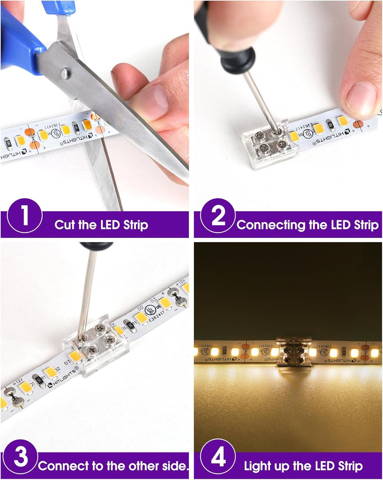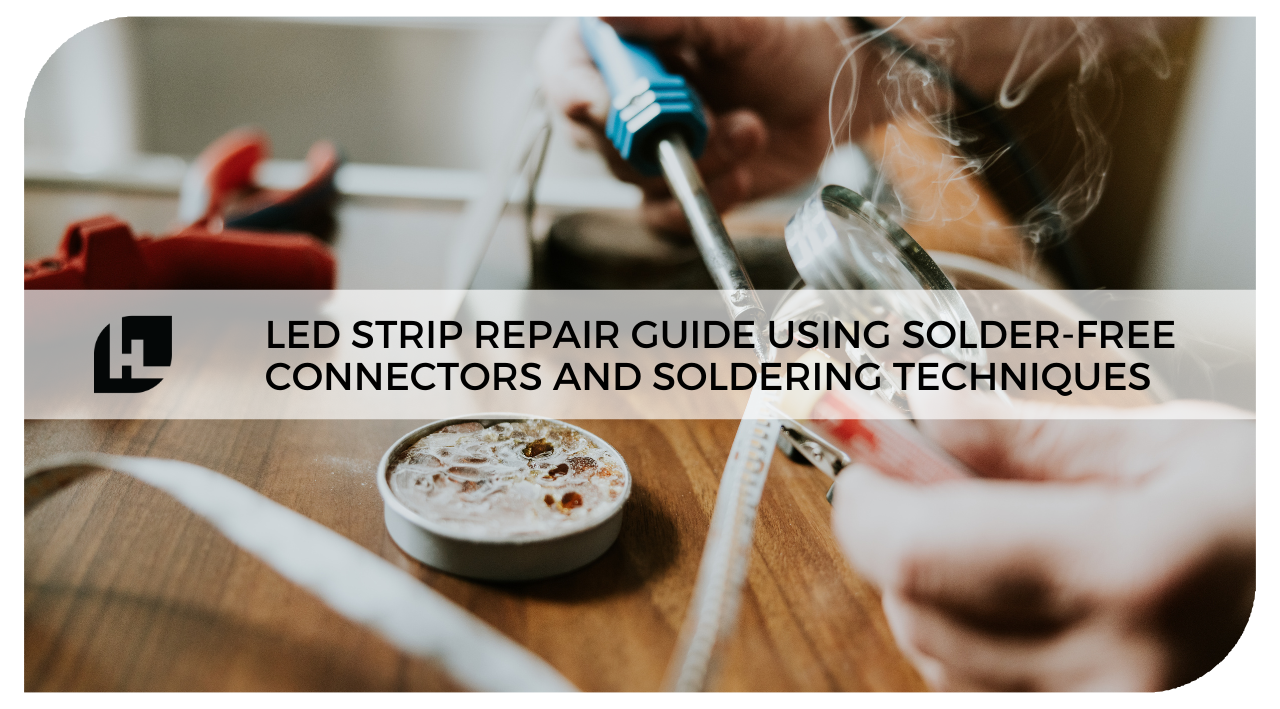Introduction
LED strip lights are the go-to choice for professionals because of their versatility, efficiency, and variety of customization options. Replacing the entire strip when one section gets damaged can be expensive. Luckily there are practical ways to repair your LED strips thanks to solder-free connectors and soldering methods. Solder-free LED connectors offer a simple and successful way to repair broken LED strips without the need for specialized tools or expertise. If professionals and DIYers alike know how to apply these connectors alongside basic soldering, then the longevity of an LED installation can be achieved and thereby reducing waste and costs.
Understanding LED Strip Construction and Common Failure Points
- Broken Connections: Repeated bending, pulling, or installation errors can sever circuit traces.
- Physical Damage: Cuts, twists, or impact can cause a section of the strip to stop working.
- Moisture Exposure: Non-waterproof strips exposed to moisture can corrode, causing failure.
- Overheating: Poor ventilation or excessive power draw can degrade components.
Choosing the Right Repair Method: Solder-Free Connectors vs. Soldering
Tools and Materials for LED Strip Repair
- LED Solder-Free Connectors (e.g., gapless, L-shaped, T-shaped, or extension connectors)
- Wire cutters/strippers
- Multimeter (to test connections)
- Soldering iron (temperature-controlled recommended)
- Solder wire (rosin-core recommended)
- Soldering flux
- Helping hands (optional but useful)
- Heat shrink tubing
- Electrical tape
- Isopropyl alcohol (for cleaning solder pads)
Step-by-Step Guide: Repairing LED Strips with Solder-Free Connectors
1. Identify the Faulty Section

Step-by-Step Guide: Soldering a Dead Section (For Permanent Fixes)
- Use a multimeter to confirm the break in the circuit.
2. Cut and Prepare the LED Strip Ends
- Cut the damaged section at the nearest copper pads.
- Use a knife to remove any silicone coating around the pads.
3. Tin the Copper Pads
- Apply a small amount of flux to improve adhesion.
- Heat the pad with a soldering iron and apply a small amount of solder.
4. Prepare Jumper Wires
- Cut small wires to bridge the broken gap.
- Strip the ends and tin them with solder.
5. Solder the Connection
- Solder each wire to the respective copper pad, ensuring solid joints.
6. Test and Insulate
- Use a multimeter to check continuity.
- Apply heat shrink tubing over the soldered area for protection
Troubleshooting Common Connector and Soldering Issues
- LED strip not lighting up? Check power alignment and ensure proper contact in the connector.
- Flickering LED strip? This may indicate a loose connector latch or weak solder joint.
- Overheating? Ensure proper power supply and heat dissipation.
Long-Term Maintenance and Prevention of LED Strip Failure
- Use a compatible power supply to avoid overloading.
- Ensure proper heat dissipation using aluminum channels.
- Avoid excessive bending to prevent internal wire breakag

